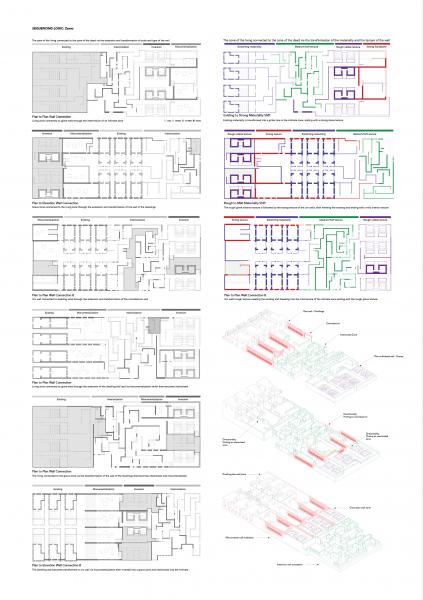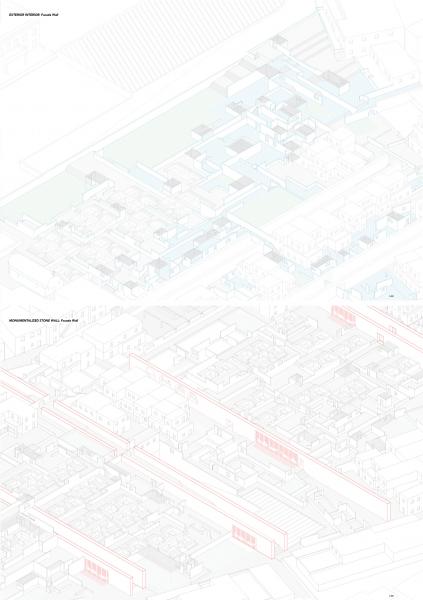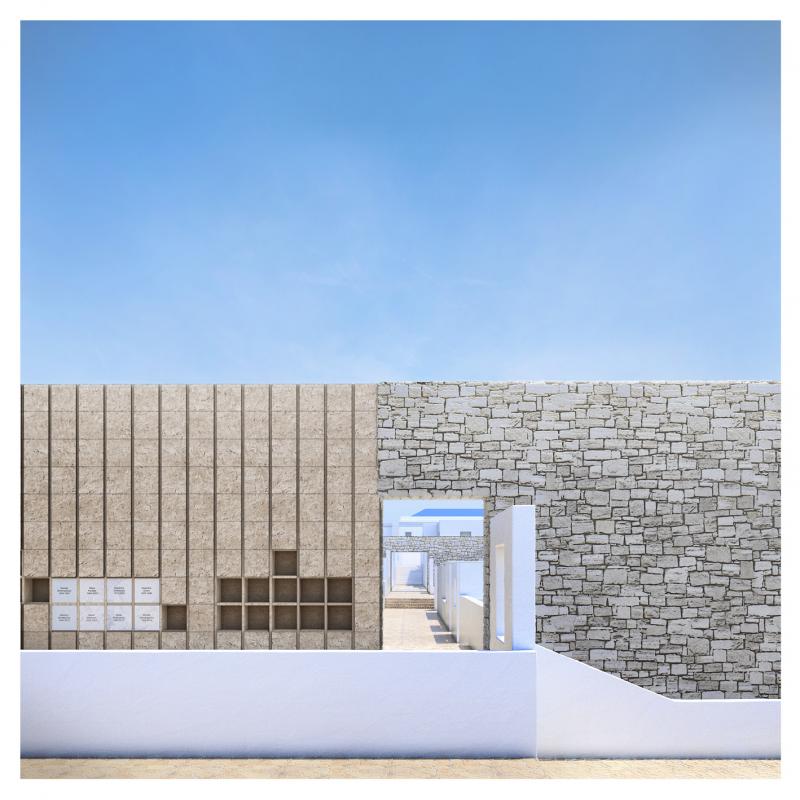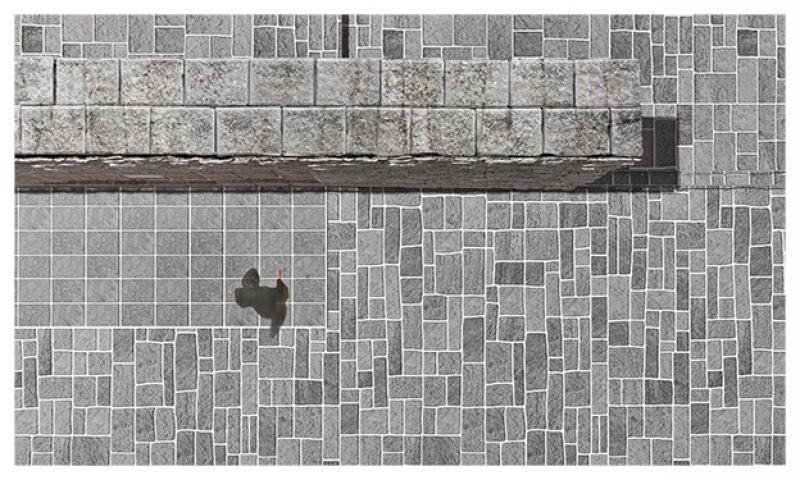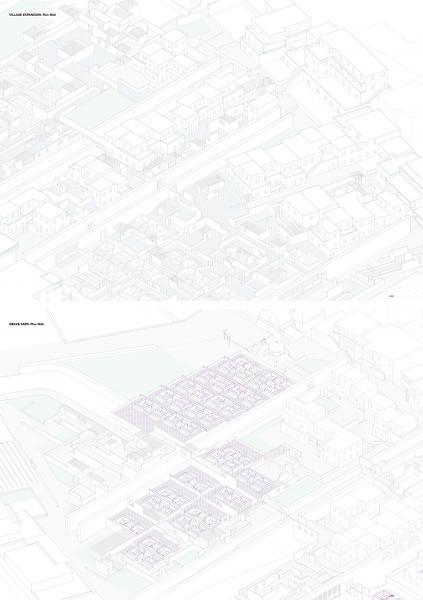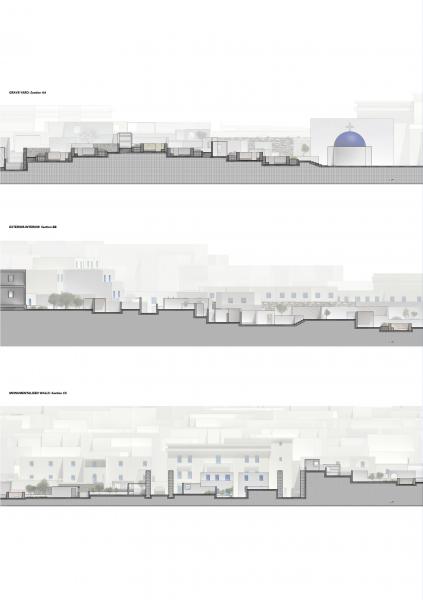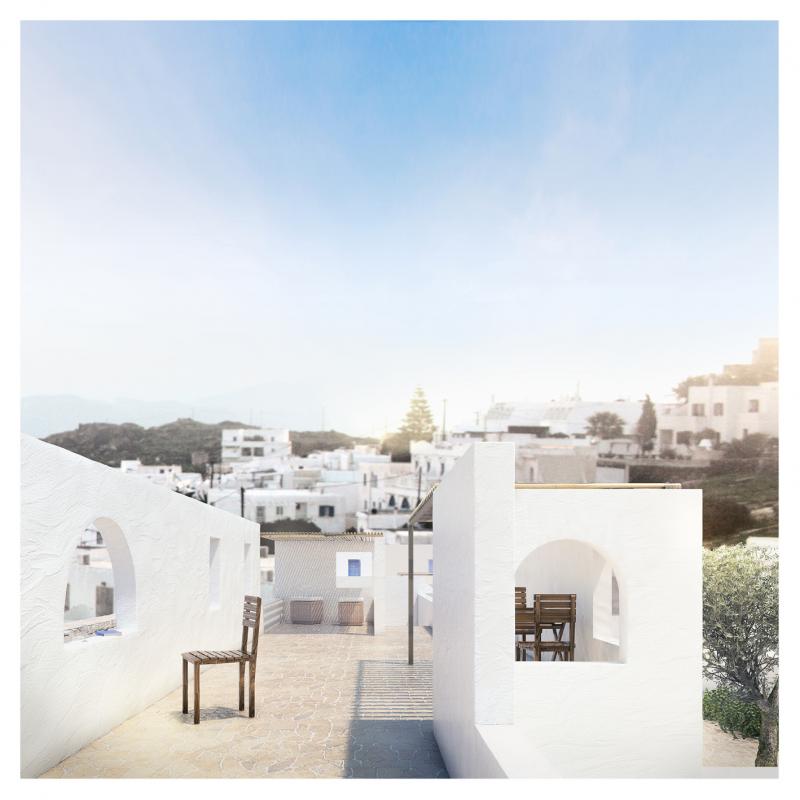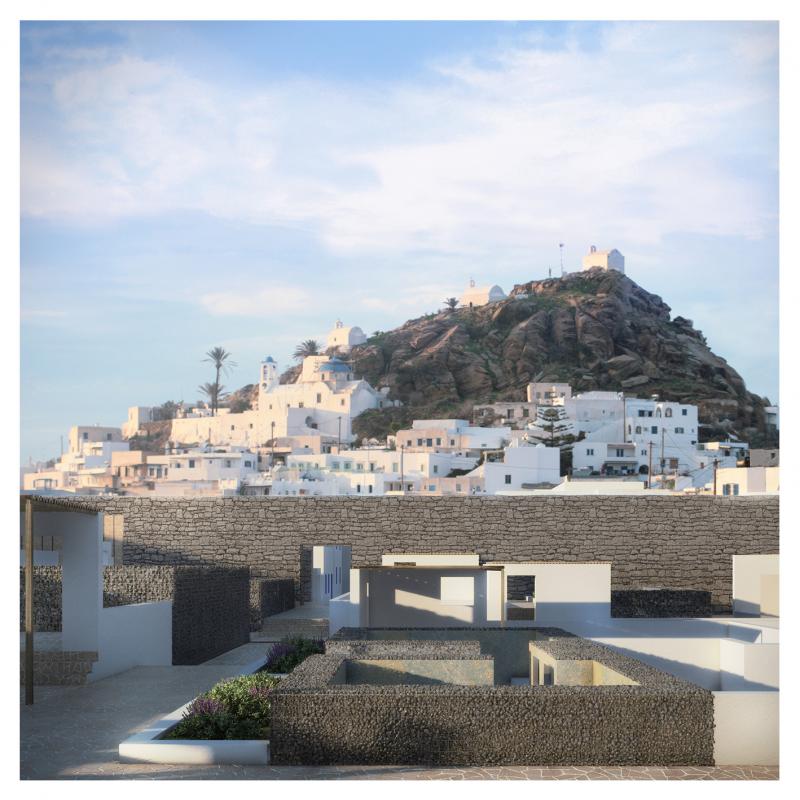Zonal Distribution: Combinatory Possibilities
The two orders of the plan, the enclosure of positive space (dwellings) and the punctuation of negative space (graves) is always buffered and mediated by the facade walls that offer a hierarchical logic of transitional zones with a large distributional variation

